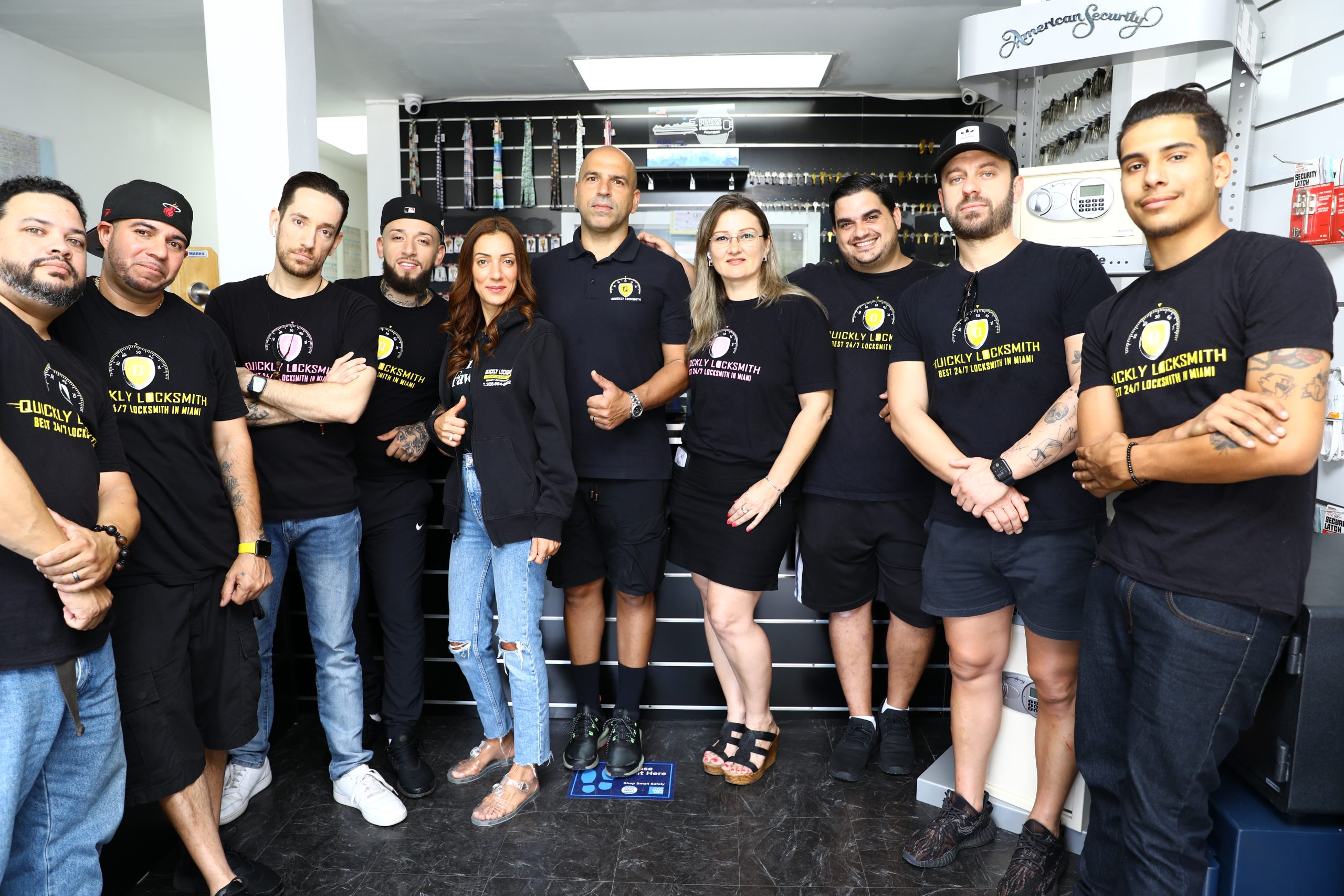
After 18 years serving Miami as a locksmith and security professional, I’ve witnessed how our unique climate creates extraordinary challenges for security systems. From Hurricane Andrew’s catastrophic impact in 1992 to the increasing frequency of tropical storms we’re experiencing today, Miami’s weather continues to test and reshape security standards.
Looking back at Miami’s hurricane history—Andrew (1992), Wilma (2005), Irma (2017)—each major storm has revealed vulnerabilities in existing security systems and driven innovations in response. As a locksmith who began working shortly after Andrew’s devastation, I’ve seen firsthand how security technology has evolved through necessity to withstand our increasingly volatile climate.
The combination of salt air, extreme humidity, hurricane-force winds, and flooding creates a perfect storm of security vulnerabilities that standard solutions simply can’t handle. In this article, I’ll share the most common weather-related security problems I’ve encountered in Miami, the specialized solutions we’ve developed, and how we’re preparing for a future where climate models predict even more challenging conditions.
Hurricane Andrew fundamentally changed Miami’s approach to security. Before Andrew, standard locks and security systems were typically designed for moderate weather conditions. The storm’s 165+ mph winds exposed critical weaknesses:
Andrew led to Miami-Dade’s strengthened building codes, indirectly improving security standards by requiring more robust doors, windows, and structural elements. Security system manufacturers began developing “coastal environment” versions of their products specifically for markets like South Florida.
Hurricane Wilma brought new lessons, particularly regarding electronic security systems:
Wilma’s aftermath saw the first widespread adoption of marine-grade security components and multi-day battery backup systems in Miami’s commercial buildings.
By 2017, Miami had developed more sophisticated security systems, yet Hurricane Irma still revealed vulnerabilities:
Each major storm has driven innovation and adaptation in Miami’s security industry. Today’s systems incorporate lessons learned from these historical events, but climate trends suggest we’ll continue evolving our approach.
Power outages are inevitable during hurricanes and severe storms. When power fails, so do electronic access control systems, leaving properties vulnerable precisely when they need protection most. Standard backup batteries often prove inadequate for Miami’s extended outages, which can last days or even weeks.
This is particularly concerning when considering what happens if you get locked out of your house during a storm. Traditional lockout solutions may be unavailable if roads are impassable, and the average cost of a locksmith for emergency hurricane response can jump from our standard $85-150 service call to $200-300 during disaster conditions—if service is available at all.
Most security systems come with basic battery backup, but these typically provide only 4-12 hours of operation—woefully inadequate for our hurricane scenarios. Additionally, when these systems do fail, they often default to an unsecured state for fire safety reasons, creating significant security vulnerabilities.
Effective hurricane-ready power backup requires a multi-layered approach:
Extended-Capacity Battery Systems
Solar Charging Integration
Solar Smart Lock Integration
Generator Integration
Critical Component Prioritization
Battery Backup System Comparison:
| Feature | Standard System | Hurricane-Ready System |
| Runtime | 4-12 hours | 72+ hours |
| Construction | Standard-sealed lead acid | Gel cell with humidity protection |
| Charging | Fixed voltage | Temperature-compensated |
| Monitoring | Basic status indicator | Advanced health monitoring |
| Expansion | Fixed capacity | Modular expansion capability |
| Cost | $120-250 | $350-680 |
| Lifespan in Miami | 1-2 years | 3-5 years |
“Here’s something most security companies won’t tell you: battery age matters more than capacity. I’ve seen brand-new systems fail during hurricanes because they were installed with batteries that sat on a shelf for months. After Hurricane Wilma in 2005, I responded to 14 commercial properties where brand-new battery backups failed. Their UPS systems showed ‘new’ installation dates, but the batteries themselves had manufacturing dates from 8-10 months earlier.
As an authorized locksmith in Miami, I always date every battery we install and replace them on a strict schedule, regardless of how ‘new’ they appear. After Hurricane Irma, the properties that maintained security were the ones where we had replaced batteries within the previous six months. My advice? Replace your backup batteries every spring, before hurricane season begins, even if they seem fine. For an average commercial system, this costs about $120-180 but can save thousands in emergency repairs and prevent security breaches. Also, consider installing solar smart locks on critical access points—they’ve proven remarkably reliable during extended outages, and the technology has improved dramatically in recent years. We now install Yale Assure Lock SL with solar add-on modules for about $350, and they’ve maintained function through multiple tropical storms.”
Even with backup power, electronic security systems can fail during extreme weather. When this happens, properties become inaccessible to legitimate users or, worse, completely unsecured. Standard override systems are often poorly designed, improperly documented, or inadequately maintained, resulting in security breakdowns during emergencies.
This scenario often leads to the dreaded situation of what happens if you get locked out of your house during a hurricane. In such emergencies, only authorized locksmiths with proper credentials should be trusted, as storm situations, unfortunately, attract scammers quoting far above the average cost of a locksmith for emergency service.
Additionally, many property managers discover too late that their override keys have deteriorated from lack of use or exposure to Miami’s humidity, rendering them useless when needed most.
Comprehensive manual override systems require several key elements:
Weather-Resistant Mechanical Overrides
Structured Key Management
Staff Training and Documentation
Emergency Access Provisions
“The biggest mistake I see with override systems is lack of practice. Keys that sit unused in emergency boxes for years often fail when needed. I learned this lesson the hard way during Hurricane Katrina when I responded to a Miami Beach hotel where staff couldn’t access their override keys. The key box had been sealed for so long that the humidity inside had corroded the keys beyond use. We had to drill their locks at an emergency rate of $250 per door.
As a locksmith in Miami specializing in emergency response, I recommend a monthly ‘override drill’ where staff use the mechanical keys. This not only ensures the keys work but also that your team knows how to use them under pressure. Another insider tip: keep a small tube of graphite lubricant (costs about $8) in your emergency key box. Sometimes you only get one chance to make that key work, and proper lubrication can make all the difference. I’ve seen panicked property managers break keys in locks during emergencies because they tried to force dry keys in neglected cylinders. If you find yourself in this situation, call only authorized locksmiths with proper credentials and insurance—the average cost of a locksmith for emergency hurricane response should be communicated upfront. At Quickly Locksmith Miami, we maintain transparent emergency pricing of $150-250 depending on conditions, rather than the variable pricing many operators charge during disasters.”
Water infiltration is the primary cause of security system failures during hurricanes and heavy storms. Standard locks and electronic components quickly malfunction when exposed to Miami’s combination of driving rain, flooding, and extreme humidity.
Electronic readers, control panels, and power supplies are particularly vulnerable, with moisture causing short circuits, corrosion, and complete system failure. Even “weather-resistant” components often prove inadequate for Miami’s extreme conditions.
True water resistance requires specialized components and installation methods:
Marine-Grade Hardware Selection
Wet-Finger Compatible Biometrics
Solar Smart Lock Systems
Advanced Installation Techniques
Specialized Weatherproofing
IP Ratings for Security Components:
| IP Rating | Protection Level | Recommended Applications |
| IP54 | Limited dust and splash protection | Indoor use only in Miami |
| IP65 | Dust-tight and water-jet protection | Covered exterior locations |
| IP66 | Dust-tight and powerful water jets | General exterior applications |
| IP67 | Dust-tight and temporary immersion | Flood-prone areas |
| IP68 | Dust-tight and continuous immersion | Direct water exposure locations |
“Most people focus on waterproofing the obvious components—locks and card readers—but forget about junction boxes and wire connections. During Hurricane Irma, I responded to an emergency at a Brickell high-rise where their entire access control system failed. The main components were fine, but water had infiltrated a single junction box, causing a system-wide failure. The repair cost them over $3,800 because we had to replace multiple controllers that got damaged by water-induced short circuits.
In my experience as a locksmith in Miami specializing in hurricane preparation, these connection points cause more failures than the actual devices. I always use marine-grade heat-shrink butt connectors with adhesive lining rather than standard wire nuts. They cost about $1.50 each versus $0.30 for standard connectors, but I’ve opened junction boxes after hurricanes where these connections were the only dry points in an otherwise flooded box. Also, monitor the seals around your components. The UV in our Miami sun deteriorates rubber gaskets faster than you’d expect. I recommend applying a UV-resistant silicone protectant (about $15 per can) twice yearly to extend gasket life. This simple $5 maintenance step has saved clients thousands in water damage repairs and prevented scenarios where homeowners get locked out of their houses due to water-damaged electronic locks. For critical access points, solar smart locks with fully sealed designs have proven remarkably reliable in flood-prone areas. We now install Schlage Encode deadbolts with solar backups for about $320 each, and they’ve maintained function even in homes with first-floor flooding.”
Hurricane-force winds and flying debris can physically destroy security components, particularly those mounted on exterior surfaces. Standard equipment enclosures shatter upon impact, leaving sensitive components exposed to the elements and rendering systems inoperable.
When security components fail due to impact damage, it often creates situations where residents get locked out of their houses during the worst possible conditions. The average cost of a locksmith for emergency impact-related repairs can be substantial, particularly when specialized hurricane-resistant components need replacement.
Additionally, pressure changes during storms can affect door alignment, preventing proper locking and creating security vulnerabilities even with undamaged hardware.
Comprehensive impact protection requires multiple defensive strategies:
Reinforced Component Housings
Strategic Component Positioning
Enhanced Storm-Resistant Materials
Door Reinforcement Systems
“Here’s a counterintuitive tip I’ve learned after seeing thousands of storm-damaged systems: sometimes flexible mounting is better than rigid mounting. Many installers try to make everything as solid as possible, but in hurricane conditions, this often leads to catastrophic failure when the mounting point gets hit. As an experienced locksmith in Miami, I prefer semi-flexible mounting systems that can absorb impacts and flex with pressure changes. Think of how palm trees survive hurricanes by bending rather than breaking. For exterior components, I always use vibration-damping standoffs rather than direct mounting. They cost about $15 more per installation point but have saved countless systems during storms. Also, check your door gaps seasonally—Miami’s humidity causes wood doors to swell in summer and shrink in winter, affecting lock alignment. A properly aligned lock is much less likely to jam during a storm, preventing situations where you get locked out of your house when you need shelter most. For solar smart lock installations, I recommend additional impact shields specifically designed to protect solar panels from flying debris.”
Standard security installation methods fail to account for Miami’s extreme weather conditions. Inadequate mounting, improper sealing, and failure to consider environmental factors lead to premature system failures, often during critical weather events.
When improperly installed systems fail during storms, emergency lockout situations become common, and the average cost of a locksmith for emergency service during disaster conditions can be prohibitive—if service is available at all. Only authorized locksmiths should be trusted for such critical repairs.
Additionally, poor installation documentation makes troubleshooting and repairs difficult, extending system downtime and security vulnerabilities after storms.
Hurricane-resistant installation requires specialized protocols:
Advanced Mounting Methods
Redundant System Design
Solar Smart Lock Integration
AI-Powered Maintenance Alerts
Comprehensive Documentation
“Documentation saves systems. Period. As a licensed locksmith in Miami focused on hurricane preparedness, I can’t tell you how many times I’ve responded to emergency calls where no one knows how the system was installed or configured. During hurricane recovery, this can add days to your downtime. I insist on photo documentation of every installation, especially before the walls are closed up. These photos have saved countless hours troubleshooting obscure problems after storms. Another tip: use stainless steel fasteners with an anti-seize compound. It costs about twice as much as standard hardware, but in Miami’s salt air, standard screws can become completely fused within a year, making repairs nearly impossible. Trust me—you don’t want to be drilling out seized screws during an emergency repair after a hurricane. The few extra dollars spent during installation can save thousands in emergency service costs. For solar smart lock installations, ensure proper documentation of power requirements and backup systems to prevent unexpected lockouts during extended outages.”
Climate models project that Miami will face increasingly frequent and severe weather events in the coming decades. This presents several emerging challenges for security systems:
Current security planning often fails to account for these long-term trends, focusing instead on historical weather patterns that may no longer apply.
Forward-looking security design must incorporate climate resilience:
Enhanced Durability Standards
Adaptive System Architecture
Predictive Maintenance Based on Climate Trends
Long-Term Resilience Planning
“Based on what I’ve seen over 18 years in Miami, systems that worked perfectly five years ago are now failing under current conditions. Looking forward, I advise clients to upgrade to components rated for at least 20% more severe conditions than we currently experience. For example, if your area sees occasional flooding of 6 inches, design for potential 12-inch floods. If standard wind ratings for your zone are 140 mph, select components tested to 170 mph. This forward-looking approach typically adds about 15-25% to initial costs but significantly reduces long-term replacement expenses and vulnerability periods. Remember, today’s ‘rare’ weather event may become tomorrow’s regular occurrence.”
As climate challenges intensify, several promising technologies are transforming our approach to weather-resistant security:
The latest generation of solar-powered security offers unprecedented reliability:
Traditional biometric readers fail in humid or wet conditions. New multispectral imaging technology offers reliability even with wet fingers by:
Artificial intelligence is revolutionizing security system reliability through:
Cutting-edge materials are creating new possibilities for extreme weather resistance:
Based on lessons learned through decades of Miami storms and projections for future conditions, here’s a comprehensive preparation approach:
Annual Hurricane Security Preparation Calendar:
| Month | Preparation Activity |
| January | Annual security assessment scheduling |
| February | Budget planning for upgrades |
| March | Order specialized components |
| April | Begin installation of upgrades |
| May | System testing and staff training |
| June | Battery replacement and final preparations |
| July-November | Monthly maintenance checks |
| December | Post-season evaluation |
Cost Comparison: Prevention vs. Emergency Response:
| Security Measure | Preventative Cost | Emergency/Replacement Cost | Savings |
| Battery Replacement | $150 | $450 + downtime | $300+ |
| Marine-Grade Hardware | $320 | $950 + security breach risk | $630+ |
| Water-Resistant Installation | $450 | $3,800 + system downtime | $3,350+ |
| Proper Documentation | $175 | $800 in extended service time | $625+ |
| Annual Maintenance | $350 | $2,200 in preventable failures | $1,850+ |
| TOTAL SAVINGS | $6,755+ |
Miami’s weather challenges for security systems have evolved dramatically since Hurricane Andrew reshaped our understanding of “weather resistance” in 1992. From traditional locks to AI-powered predictive maintenance, each major storm has driven innovation while revealing new vulnerabilities.
Looking ahead, climate projections suggest that Miami’s security challenges will continue to intensify. The solutions outlined in this article represent not just current best practices but forward-looking approaches designed to withstand increasingly volatile conditions.
At Quickly Locksmith Miami, we’re committed to creating security solutions that stand up to whatever weather challenges Miami faces, today and tomorrow. Whether you’re securing a single-family home in Coconut Grove or a high-rise in Brickell, hurricane-ready security is no longer optional—it’s essential.
For personalized advice on weather-proofing your security systems, visit us at our Midtown location (2680 NE 2nd Ave) or our Downtown shop (26 SE 1st St). We’re here to help Miami stay secure through storm season and beyond, drawing on lessons from our past while preparing for an increasingly challenging future.
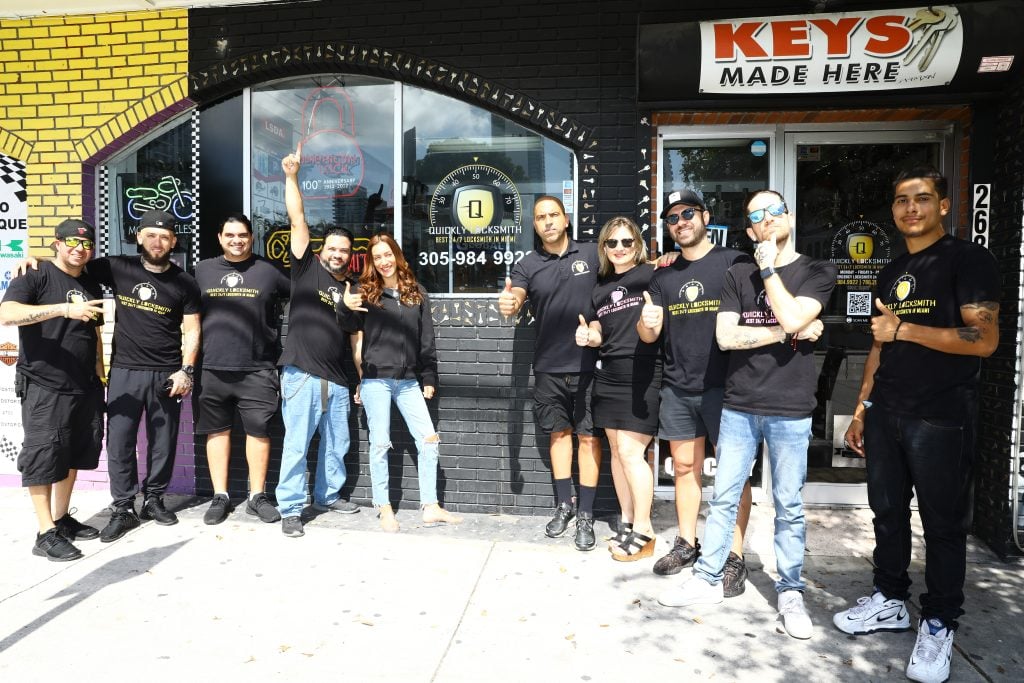
Quickly locksmith team in Miami at Midtown locksmith store
Words of Trust: Our valued customers share their experiences with our services. Discover how we've earned their trust and satisfaction. Join our community today! Our average customer rating is 4.6 / 5 based on 704 reviews.


I was in a jam with a broken lock, and these locksmiths came to my rescue! Fast, reliable, and courteous service.
I highly recommend them for any locksmith needs. A+ service!


I needed new locks installed in my home, and this locksmith company exceeded my expectations. Professional, efficient, and reasonably priced. I feel safer now. Thank you!


Locked out of my car in the middle of the night, but these locksmiths arrived quickly and got me back in. Their 24/7 service saved me! Top-notch service with a friendly attitude.
We serve all of Miami Dade-County surrounding areas
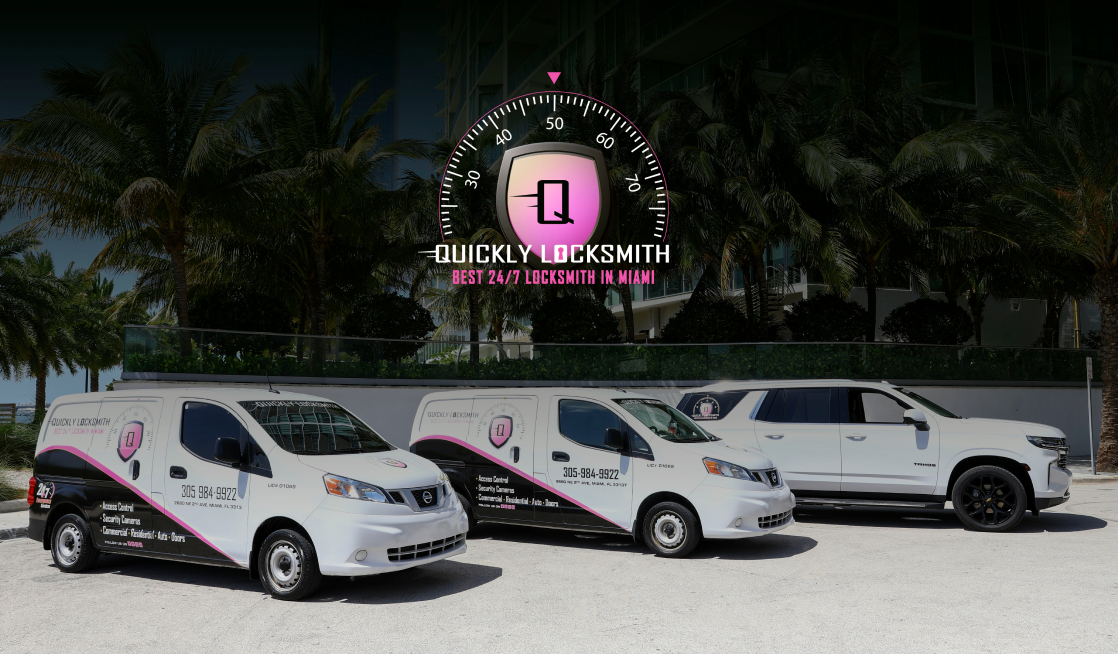
We truly care about your security. Keeping you, your family and your most valuable possessions safe is why we are in business. However, whenever you are looking to hire a residential locksmith service, here are some valuable tips to make the right choice.
Find The Nearest Locksmith To Your Location in Miami FL
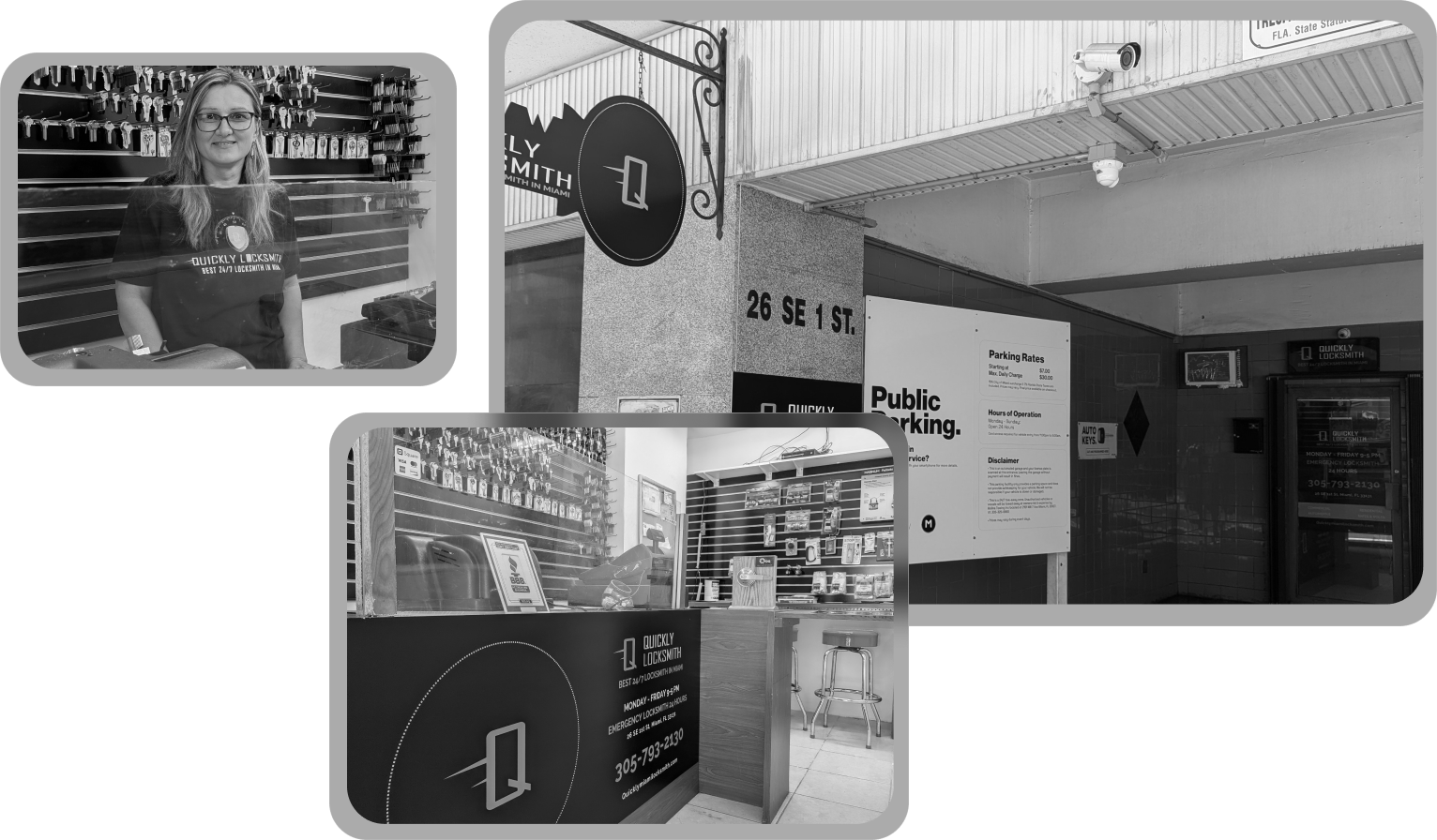
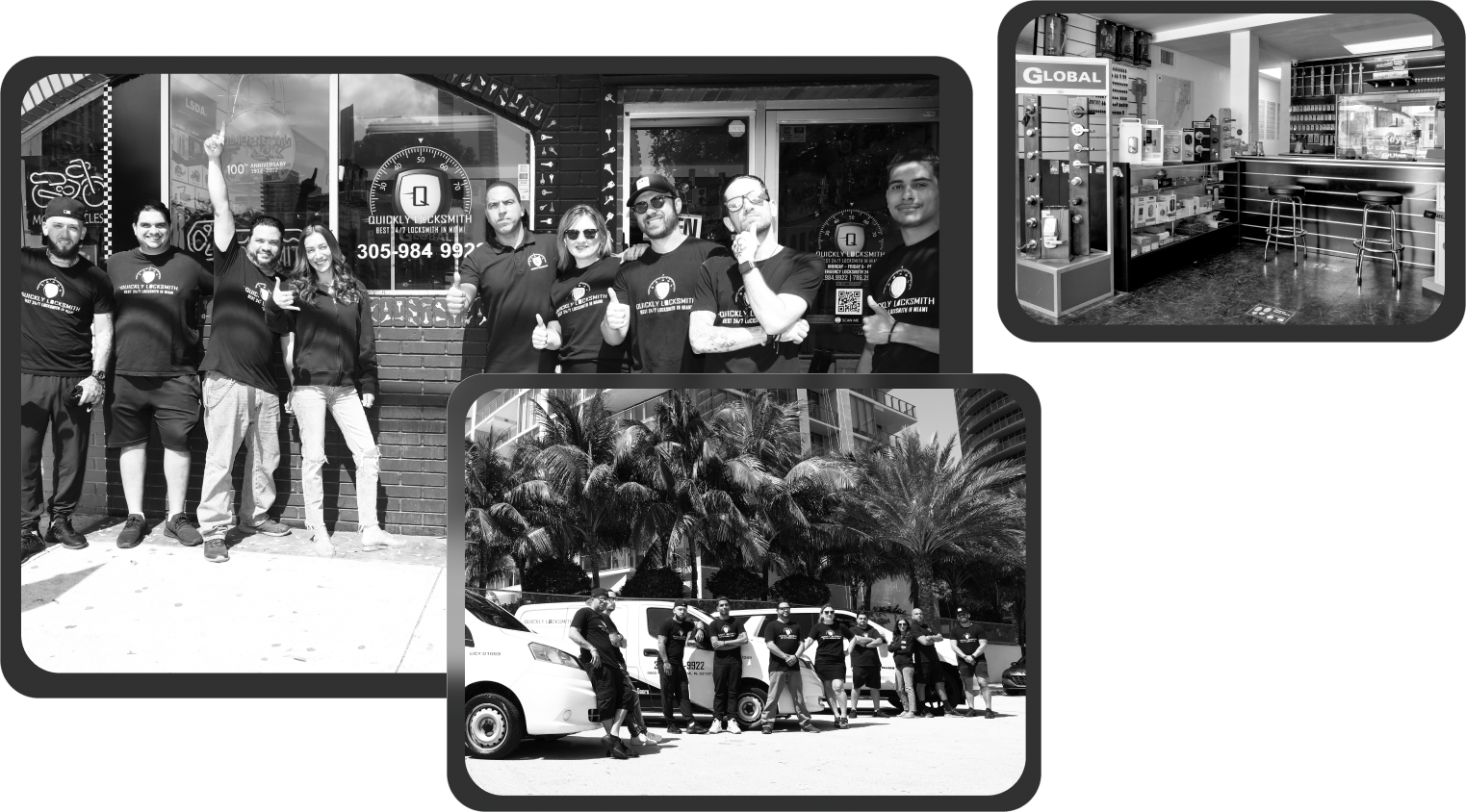

Midtown Miami Location: 2680 NE 2nd Ave, Miami, FL 33137.